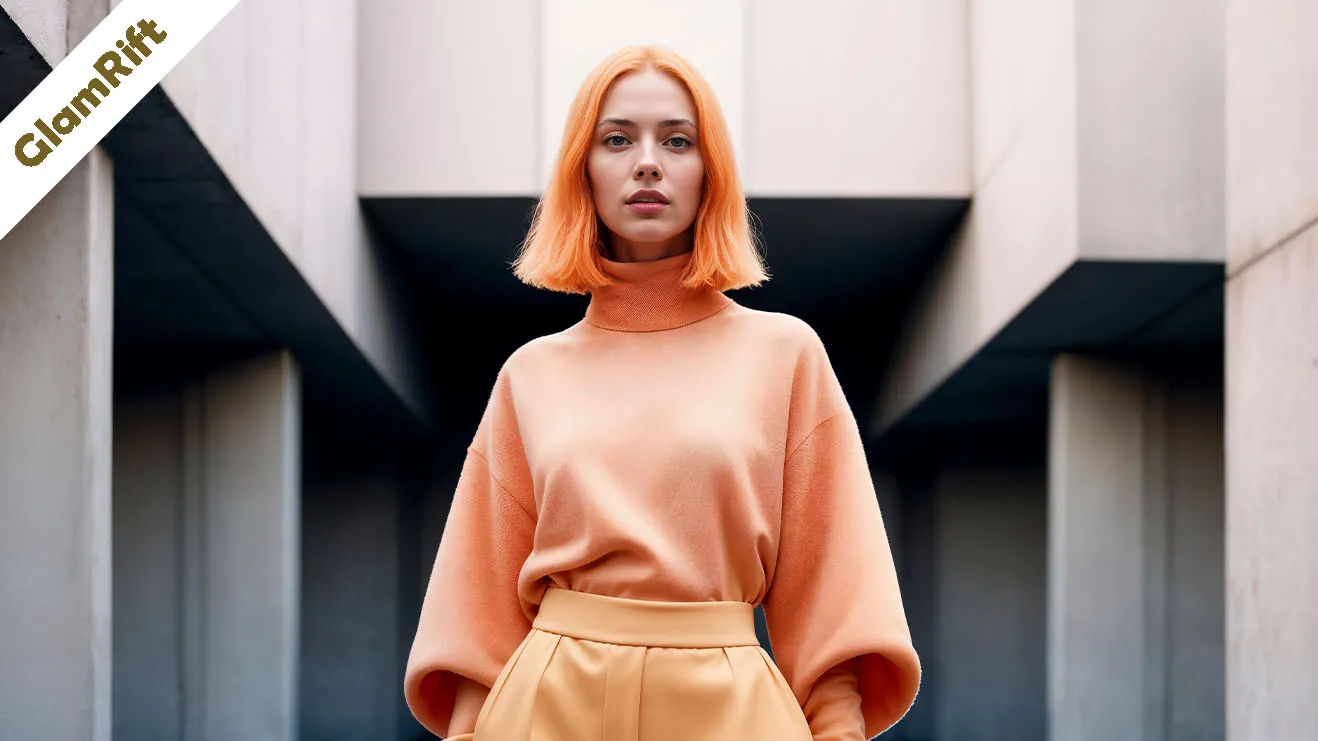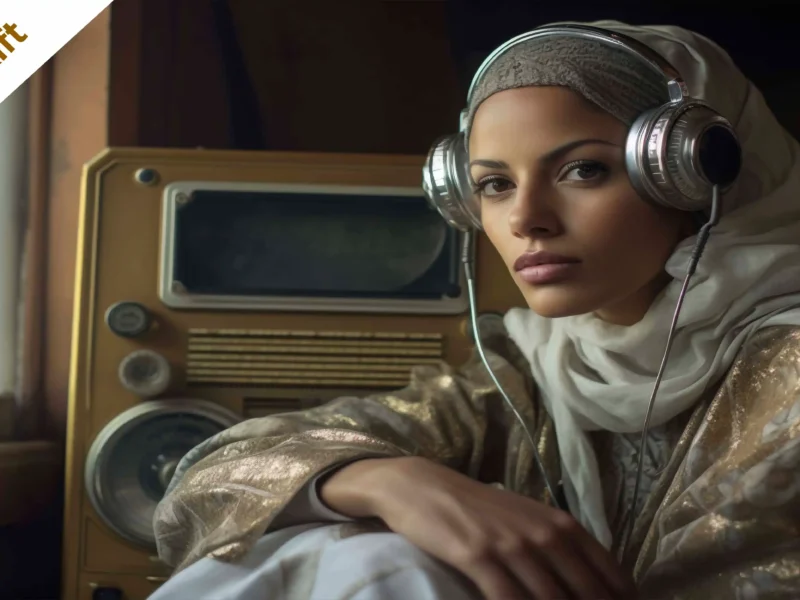You’re about to shop in a way that feels effortless: AI-Curated Outfits tailor full looks to your size, style, mood, weather, and budget, then preview fit with virtual try-ons so you buy with confidence. Instead of scrolling through endless items, you get cohesive looks that reduce decision fatigue and uncover pieces you’d actually wear. AI-Curated Outfits also help brands optimize inventory and pricing—yet the real shift is how you’ll decide what to wear next.
Key Takeaways from AI-Curated Outfits
- AI stylists assemble complete, context-aware outfits using your purchases, skips, measurements, mood, weather, occasion, and budget.
- Virtual try-on with digital twins previews fit, drape, and color, increasing size accuracy and reportedly cutting returns by up to ~30%.
- Generative styling blends catalog retrieval and creative pairing to deliver zero-input feeds and chat-based refinement of silhouettes, fabrics, and palettes.
- Personalization boosts conversion, units-per-transaction, and average order value through complementary cross-sells aligned with live inventory and pricing.
- Multi-modal inputs—selfies, images, voice—plus consistent likes/skips rapidly sharpen recommendations and reduce decision fatigue.
A New Era for How We Shop
While search bars still sit atop most shopping apps, the real action is shifting beneath them: AI now assembles complete outfits for you, not just products. You get AI-curated outfits that read your signals—past purchases, saved items, skipped looks, and measurements—to deliver shoppable looks in real time. With digital twins and virtual try-ons, you preview fit, drape, and color before tapping buy, boosting confidence and cutting returns.
Generative AI styles to mood, weather, occasion, and budget, so discovery happens without effort. Zero-input feeds surface outfits on your lockscreen, and dynamic merchandising adapts picks to inventory, trends, and engagement, increasing units-per-transaction and average order value by pairing smart complements. You enjoy truly personalized shopping while brands forecast demand, optimize inventory, and reduce overproduction.
What AI Shopping Is and Why It Matters
Even before you type a word, AI-Curated Outfits shopping gets to work, turning signals like past purchases, clicks, saved items, measurements, and mood prompts into real-time outfit recommendations. It fuses machine learning, computer vision, and personalization engines to deliver AI-Curated Outfits that respond to your context—weather, occasion, and recent interactions—instead of static filters. You guide it with likes and skips while privacy controls keep permissions clear.
Generative styling assembles shoppable sets that complete the look on PDPs, emails, and feeds, lifting average order value. With a selfie or scan, virtual try-on and digital twins align picks to your body measurements, boosting fit confidence and reducing return rates.
| Signal | System Action | Outcome |
|---|---|---|
| Past buys | Style inference | Smarter picks |
| Mood/occasion | Context shift | Relevant looks |
| Fit data | Size mapping | Fewer returns |
Why the Old Way of Shopping Feels Outdated
AI styling shows what’s possible, which makes the old workflow feel clunky by comparison. You still juggle keyword searches and rigid filters, and a query like “effortless weekend outfit” spits out random products instead of coherent looks. Static pages with one model and one angle strip away context, so you can’t visualize how pieces work together. That uncertainty fuels 20–30% fashion returns (McKinsey report on fashion e-commerce).
Endless scrolling creates decision fatigue. Conventional recommendations push similar items, not outfits, so cross-sell lags and you assemble everything manually. Meanwhile, legacy systems ignore mood, occasion, and fit cues.
With AI-curated outfits and personalized shopping, you expect visual AI to show full looks, smart styling suggestions, and try-on technology to preview fit—so you decide faster, buy confidently, and reduce returns while lifting average order value.
Key Technologies Behind AI-Curated Outfits
AI-Curated Outfits show what’s possible, which makes the old workflow feel clunky by comparison. You still juggle keyword searches and rigid filters, and a query like “effortless weekend outfit” spits out random products instead of coherent looks. Static pages with one model and one angle strip away context, so you can’t visualize how pieces work together. That uncertainty fuels 20–30% fashion returns.
When you switch to AI-Curated Outfits, the experience becomes cohesive—entire looks are generated around your preferences, reducing decision fatigue and helping you shop smarter with fewer returns.
Personalization Engines
All that tech only feels like a stylist because personalization engines turn your signals into decisions. They ingest your past purchases, clicks, size preferences, saved items, and skips, then translate them into full-look recommendations that fit your style and context. Instead of pushing single upsells, they map color, silhouette, and occasion compatibility using collaborative filtering, content models, and deep learning.
With real-time profiling, your outfit feed adapts to weather, location, new promotions, and fresh browsing. Add body measurements or digital twins, and the engine curates fit-aware looks that reduce returns while preserving taste. You judge them by outcomes: higher conversion rate, more units per transaction, bigger average order value, faster time-to-purchase, and deeper engagement. A/B tests close the loop, continually sharpening what you see next.
Digital Twins and Virtual Try-Ons
While a mood board can hint at style, digital twins show you the truth of fit. You create a precise 3D avatar from selfies or scans, capturing measurements, body shape, and skin tone. Then virtual try-ons use augmented reality and computer-vision physics to render drape, stretch, and layering, so you preview garments on your twin before buying.
Because the system learns from photos, 3D scans, and size histories, it adapts to diverse bodies and refines accuracy over time. Integrated with personalization engines, it builds personalized outfits around your proportions, past purchases, and preferences—elevating relevance and conversion. Most importantly, you gain fit confidence. Retailers report up to ~30% return reduction as size errors drop and expectations align. You don’t guess; you see, compare, and commit.
Generative AI Styling
Because styling isn’t just about single pieces, generative AI assembles full looks on demand—tops, bottoms, shoes, and accessories—by conditioning on your photos, measurements, weather, occasion, and budget. You get personalized styling in seconds, not endless scrolling. Generative AI blends catalog retrieval with creative pairing, so outfit recommendations reflect real inventory while proposing fresh combinations that fit your size, color preferences, and price limits.
These models train on millions of outfits, SKU metadata, and engagement signals—saves, clicks, purchases—so they learn your taste and seasonal shifts. You can accept a push look from your lockscreen or chat with a bot to refine silhouettes, fabrics, or palettes. With digital try-on, you preview fit, drape, and color interactions on your body or avatar, boosting confidence, reducing returns, and lifting units-per-transaction and AOV.
Discovery Over Search
Generative styling doesn’t stop at building outfits; it reshapes how you find them. With Discovery-first shopping, you don’t hunt with keywords—you signal mood or occasion and get curated looks that fit your vibe. Upload a selfie, tag “spring brunch,” or speak your intent, and the system assembles options in seconds.
It reads your context to stay personalized: past saves and skips, body measurements, and even local weather guide multi-item suggestions. Through multi-modal discovery, you can combine image uploads, voice, or short video to ask for “comfortable workwear that’s eco-friendly” and receive complete, ranked looks.
Zero-input experiences meet you on your lockscreen with one-tap outfits. Recommendations update continuously against live inventory and trending patterns, replacing static filters and reducing decision fatigue.
Benefits for Shoppers and Brands
For shoppers, AI‑curated outfits turn indecision into clarity: you see full looks tailored to your size, shape, past picks, and context, complete with virtual try-on, which boosts confidence and cuts returns—often by double digits. You get recommendations tuned to your body shape, mood, weather, and occasion, so you buy what you’ll actually wear. Because suggestions arrive as cohesive outfits, you add complementary pieces, lifting average order value and units per transaction.
For brands, personalization engines automate merchandising at scale, transforming PDPs, emails, feeds, and landing pages into shoppable styling moments. The system cross-sells from real-time availability, improving conversion while protecting margins. It also predicts demand for complete looks, optimizing assortments, improving sell-through, and driving inventory efficiency with fewer markdowns. Net result: happier customers, healthier economics.
Practical Tips for Embracing AI Styling
With the benefits clear for shoppers and brands, it’s time to make AI styling work in your day-to-day. Treat your AI stylist like a smart partner: feed it clear signals, set boundaries, and iterate. Start by engaging regularly—your clicks, saves, and skips are interaction signals that sharpen recommendations within a few sessions. Add multi-modal inputs when possible to align looks with your body shape, skin tone, and occasion. Share precise size and fit data to help virtual try-on engines curb returns. Use mood and budget filters to get cohesive, context-aware outfits without overspending. Finally, review privacy controls and choose selective data sharing.
- Save, like, and skip consistently
- Upload selfies and outfit photos
- Enter exact measurements
- Apply occasion, weather, and price filters
- Audit app permissions and retention policies
Frequently Asked Questions
What Is the Future of AI in Fashion?
It’s hyper-personal, predictive, and consent-driven. You’ll get AI-built outfits, real-time virtual try-ons, mood-based discovery, and demand-smart supply chains. You’ll shop passively, reduce returns, and trust transparent data controls, while brands cut waste with on-demand, outfit-level forecasting and manufacturing.
Is There an AI That Can Change Outfits?
Yes—tools exist. You can use systems like Glance AI or Stylitics to auto-generate full outfits from your wardrobe and body data, then try them on virtually with multimodal 3D/AR models that reflect fit, drape, stock, and occasion.
Is There an AI for Fashion Design?
Yes—use GANs, diffusion models, and AI design platforms. You’ll generate patterns and silhouettes, prototype in 3D, and cut iteration time. Pair data-driven trends with your taste; you’ll still curate ethics, materials, and brand voice while reducing overproduction.
What Is the AI That Dresses People?
It’s a combined system of recommendation engines, generative models, and computer vision. You provide sizes, selfies, and preferences; it generates styled outfits, previews fit and drape, adapts to weather and events, learns from engagement, and reduces returns securely.
Conclusion
You’re standing at the cusp of a smarter, calmer way to shop. Let AI curate full outfits from your measurements, mood, and plans, then preview the fit with virtual try-ons before you buy. You’ll skip endless scrolling, discover pieces you’d actually wear, and stay on budget. Brands win with higher sell-through; you win with confidence and time back. Start small: set preferences, allow fit data, and try a curated look. You’ll never shop the old way again.



